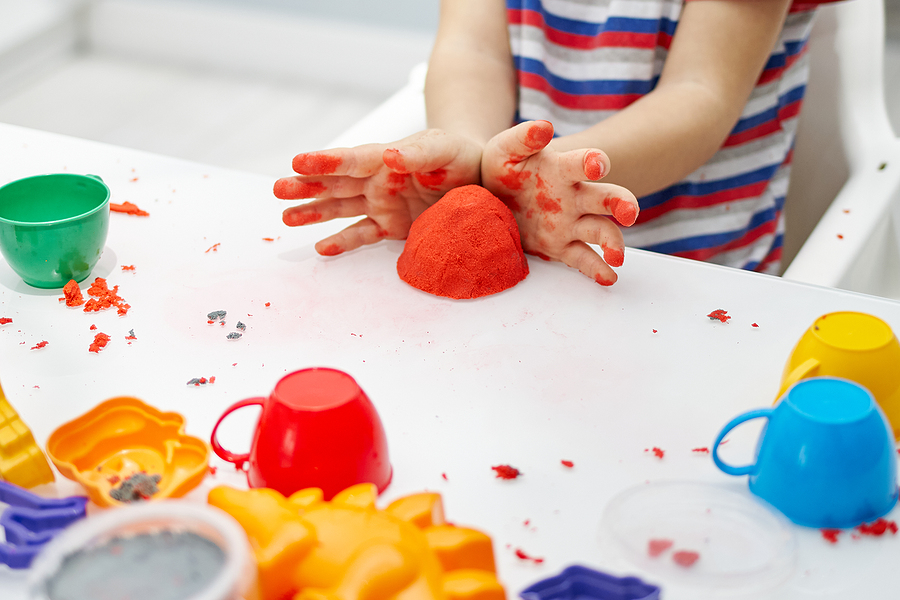During the early years, it is important for children to build their fine motor skills. This can be done in simple ways, through a child’s medium of learning – play.
Here are some tips for how to improve fine motor skills.
What is Fine Motor Skill?
Fine motor skill is the ability to control the small muscles of the body – usually the fingers, eyes, toes, etc.
A few fine motor skills examples are:
- Stacking blocks
- Opening a container
- Closing buttons on a shirt
- Making a sandwich
At What Age are Fine Motor Skills Developed?
Children begin developing fine motor control in the first year of life and continue for several years, into the first years of elementary/primary school.
As they grow and develop physically and cognitively, they reach the various fine motor milestones in a more-or-less predictable pattern.
Why Are Fine Motor Skills Important?
Fine motor skills are important because they are needed to perform many daily actions, such as playing, carrying out self-care tasks and writing.
What Happens if Fine Motor Skills are Not Developed?
Without fine motor control, a person would struggle to do many things throughout the day.
Fine motor control is necessary for the most basic of tasks – getting dressed, washing, preparing food, working, etc.
During the preschool years, it is crucial that children have many opportunities to build this skill so that they will develop the control necessary to be able to do things for themselves.
Kids are also able to participate in play – which directly affects learning – when they have finger control.
If fine motor skills are not developed, children would not only struggle to function on a daily basis, but they would also not develop the control and finger strength to be able to learn to write.
This would affect their entire schooling career and beyond.
How Do You Teach Fine Motor Skills?
Fine motor skills develop naturally during the first few years of a child’s life, as long as they are given enough opportunities to explore their environment and play.
You don’t necessarily teach fine motor skills – rather, you provide play opportunities and fine motor activities to help build this skill.
How to Improve Fine Motor Skills for Writing
While the goal may be to improve fine motor control for writing, the least appropriate way to do this is to make young children do formal writing tasks.
Preschoolers’ hands and finger muscles are not yet developed enough to hold a pencil properly and form letters correctly.
The best way to prepare kids for writing is to focus on all the play activities listed below. That way, they will be properly developing the muscle control needed to be able to write.
10 Ways to Improve Fine Motor Skills
Here are a few simple ideas for building fine motor strength.
1. Free Drawing
There are so many benefits of drawing, including being one of the best ways to build fine motor skills.
Kids should have opportunities to draw on a daily basis. They should also be able to express themselves freely without being told what to draw.
In my classroom, I had paper and pencils, crayons or pastels available every day and most children would come past the drawing table at least once or twice a day to draw something.

It’s a great way to build a good pencil grasp.
2. Process Art
Encourage children to engage in process art as much as possible to get those fingers exercising.
Process art is art that focuses on the process of creating, not on the final product.
Art that follows a model and multiple steps is often more work for the parents and teachers than for the kids and does not build creativity.
Get children involved in simple art activities such as:
- Painting and drawing with various tools and materials
- Cutting activities
- Folding and tearing papers (collaging is great for this)
- Pasting with glue sticks as well as liquid glue (with fingers or a brush)
Use a variety of materials and allow kids to experiment freely.

3. Construction Play
Construction play is a great way to engage the finger muscles and teaches so many other skills too.
There are so many types of construction toys and materials to choose from. Offer the basics, such as:
- Wooden blocks
- Lego
- Loose parts
- Magnetic toys
- Any toys that stack, fit together, snap together, link together, etc.
- Wooden planks and nails
- Box construction with waste materials
Improvise with items found around the home.

4. Sensory Play
All kinds of sensory play are great for encouraging fine motor development as children often need to manipulate the materials with some force.
Here are some wonderful types of sensory play:
- Playdough
- Sand play
- Water play
- Clay, slime, kinetic sand or any other sensory materials

5. Puzzles
Puzzles are one of my favourite activities for preschoolers. Not only do they build intellectual skills and concentration span, but they also require so much finger control to build.
Offer kids good quality wooden puzzles and make sure they are appropriate for their age and maturity.
6. Threading and Lacing
Threading and lacing are the kinds of activities that require immense concentration and fine motor control.
This is such a basic activity but it is one of the best for fine motor development.
You can use store-bought beads and lacing cards, or improvise with materials you have at home.
Thread macaroni onto a shoelace or punch holes into a cardboard shape and weave around the edges.
Make a shoe-shaped cutout to practise tying shoelaces.

7. Finger Rhymes
Children’s rhymes are educational for so many reasons and can even build fine motor strength.
Fingerplays such as “Tommy Thumb” or “Two Little Dickie Birds” are great exercises for improving fine motor skills.
8. Fine Motor Toys
There are so many fine motor skills toys available for purchase. While it is not necessary to buy lots of these, you may want just a few educational toys, such as:
- A pegboard set
- A set of wooden or plastic beads
- A set of lacing cards like these (although they can be made as I mentioned above)
Most toys can be improvised from materials at home.
9. Quiet Games
Most quiet games and indoor activities are great for building fine motor skills.
These are things like board games, memory card games, sequencing games, card sets, etc.
Get your own set of memory game matching cards, sequencing cards, printable puzzles and more.
10. Encourage Independence
Lastly, remember that encouraging children to do for themselves what they are capable of doing will certainly build these skills.
All kinds of self-care tasks – eating, dressing, going to the bathroom, tidying up – will encourage independence and develop the small muscles of the hands.
These are just a few simple tips for how to develop fine motor skills. Improvise with any materials you have at home for some fun fine motor practice and try these fine motor games too.

